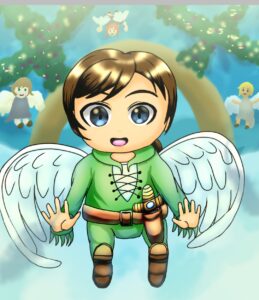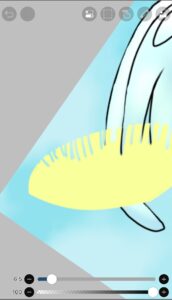1. What is the role of highlights?
Highlights are a technique for expressing areas that shine brightly when light hits them. Adding highlights to the background adds brightness and three-dimensionality to the picture. When drawing a two-headed character, using highlights effectively in the background will make the character stand out more and improve the overall impression of the picture.
2. Consider the light source

When adding highlights, it is important to first consider the position of the light source. Where to place the highlights will depend on the direction from which the light is hitting them.
Consider the direction of the light and the intensity of the light as well.

First, if the light source is above, place the highlights on the top of the background or in the areas directly hit by the light. If the light source is to the side, place the highlights on the side where the light is hitting.
If the light is strong, the highlights will be brighter, and if the light is weak, the highlights will be softer. Under strong sunlight during the day, the highlights will be clear, and in the evening or on cloudy days, soft light will be expressed.
3. How to add background highlights

Once you ha ve decided where to put the highlights in the background, next think about how to draw them. The way you draw the highlights will vary depending on the elements of the background.
4. Adding shading to the highlights

By varying the intensity of the highlights, the background will look more realistic. Use shading to add depth to the background.
It is also important to distinguish between strong and soft highlights and add reflected light as a technique.

First, add clear highlights to areas that are hit strongly by light. For hard surfaces such as buildings and rocks, it is effective to draw clear, bright lines or dots.
For soft materials such as grass, lea ves, and cloth, add soft highlights. Blur the bright areas to express the gentle spread of light.

Next, draw reflected light near the highlights to create the effect of the light reflecting off the object and shining. This is particularly effective when used on backgrounds that are easy to reflect light, such as the surface of water or glass.
5. Final adjustments and finishing touches

Finally, adjust the highlights while checking the overall balance to finish the work.
After checking the balance of the highlights, try blurring them to add details.
Too many highlights can make the background look too bright and unnatural. While checking the overall balance, adjust the highlights so that they look natural.
If the highlights are too strong, you can create a softer light by blurring them a little. Blurring creates a gentle impression, especially in landscapes and natural backgrounds.
Finally, add highlights to the fine details. Adding small highlights to the windows of buildings and parts of the lea ves of trees makes the entire background appear to shine.
Summary of adding highlights to the background of a two-headed character
Adding highlights to the background of a two-headed character adds brightness and three-dimensionality to the picture. By being aware of the light source and adding highlights in natural places, the background will feel more realistic. It is important to consider the overall balance while finishing by adjusting the shading and blurring of the highlights. Use highlights well to draw an attractive background.